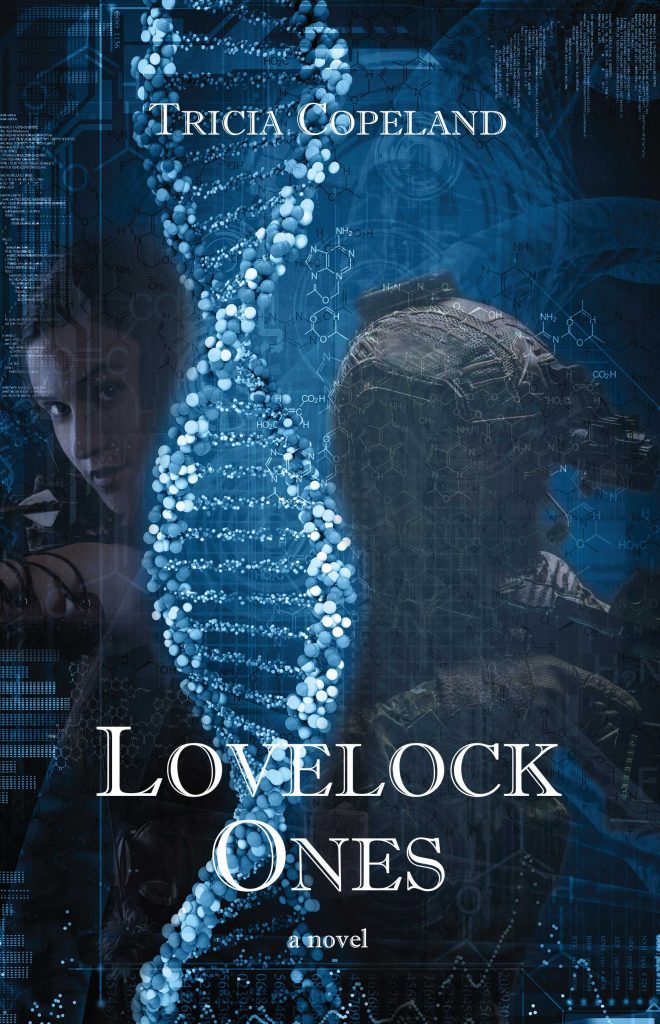
Altering human traits? Can it really happen?
Welcome to the March young adult book blog hop, the science fiction edition!
In my YA dystopian novel, Lovelock Ones, there are two main characters. These include a teen girl named Jema they call The Native One, and a teen boy named Troy they call The Bred One, hence the Lovelock Ones. In the book there are references to teens changing their eye color, skin color, and other features via genetic engineering. Further, as his title suggests, Troy finds out some disturbing facts about his conception and the reason he is stronger, faster, and has enhanced sensory abilities.
But could we develop, program, and/or alter human traits via genetic modification either before birth or after? Let’s dive into a bit of the history of cloning and genetic engineering. As early as 1885 Hans Adolf Eduard Driesch demonstrated artificial embryo twinning when he shook two-celled sea urchin embryos into separate cells. Once separated each cell grew into a complete sea urchin. Following in 1902, Hans Spemann demonstrated this in a vertebrate by splitting a salamander embryo and each cell grew into an adult salamander.
In 1952 Robert Briggs and Thomas King showed the first successful nuclear transfer of an early tadpole embryo to an enucleated (egg without a nucleus) frog egg. In 1957 J. Derek Bromhall transferred the nucleus of a rabbit embryo into an enucleated rabbit egg cell. The first mammal created by somatic cell transfer occurred in 1996 with the birth of Dolly the sheep by studies of Ian Wilmut and Keith Campbell. And in 1997 the first transgenic sheep with donor DNA resulted in Polly, a sheep that produced a special Factor IX protein in her milk.
Jurassic Park anyone? In 2009, using goats as donor eggs and surrogates, a group of researchers cloned the first extinct animal, a Spanish mountain goat called the bucardo. In 2013, Shoukhrat Mitalipov and colleagues were reportedly the first to use somatic cell nuclear transfer to create a human embryo that could be used as a source of embryonic stem cells.
A similar technology, gene therapy involves altering the genes inside a body’s cells in an effort to stop or treat disease. Currently gene therapies are only available as clinical trials.
Would you alter our DNA for enhanced traits? Should we alter DNA for enhanced traits?
Regardless of your thoughts on these questions, it’s definitely a fun theme to explore in books. And in Lovelock Ones Jema and Troy are thrown into the middle of a race for a cure to stop the latest virus plaguing the earth’s population.
Intrigued? The Lovelock Ones begins with Jema and Troy being loaded onto a transport vehicle destined for a remote desert community in hopes of avoiding the virus. But Jema’s sister gets sick. There is no cure, but Jema will not give up until she’s exhausted every possibility. Even if her own life may be in jeopardy.
You can read this dystopian YA sci-fi novel Lovelock Ones for only 99 cents on Amazon during my sale March 3-9th, 2022 or free with Kindle Unlimited. Go here to download Lovelock Ones to discover if Jema and Troy can escape becoming lab rats for a group of scientists searching for a cure.

As my guests for this hop you can read the first 3 chapters of Lovelock Ones FREE with this link!
And don’t miss our Blog Hop Giveaway here.

Discover more YA sci-fi reads & giveaways at the others stops on the hop here:
10 Young Adult Sci-Fi Books You’ll Devour If You Love Young Adult Fantasy Novels
Cyborgs & Crowns: Young Adult Science Fiction Books with Royalty
5 Reasons You Should Read YA Sci-Fi
Review of Blue Bloods by Melissa de la Cruz – A Gem in the YA World
Parallel Universes and Portal Fantasy
Should I Read YA Science Fiction? Readers Share What They Love about the Genre.
Out-of-This-World YA Indie Sci-Fi Books!
The Mirror Souls: YA Sci-Fi Trilogy for Love Triangle Fans
Happy Reading!
Tricia
